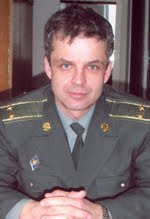June 26, 2012 (Information Centre Ukraine-2012) Ukraine’s state border was crossed in one day by the largest number of people during the recent period: over 340,000, along with 68,000 vehicles, the State Border Service reports, according to Information Centre Ukraine-2012. Let us note that passenger and transport flow saw a substantial increase during the quarter-final matches played in Donetsk and Kyiv. Starting from 5 June, the border was crossed by almost 5.7 million persons and 1.2 million vehicles.
Border guards expect the passenger flow to grow further, and in particular, forecasts are made that the number of fans from Spain and Portugal coming to the semi-final match between the national teams of these countries to be played in Donetsk will increase.
The following means of transport were admitted to cross the border for entering Ukraine during the last 24 hours: 25,377 cars (23,290 of them through “green corridor”), 634 buses, (362 of them through “green corridor”), 114 passenger trains, 255 aircraft and 80 ships.
The following means of transport crossed the border to leave the country: 38,053 cars (36,423 of them through the “green corridor”), 692 buses (389 of them through the “green corridor”), 11 passenger trains, 245 aircraft and 75 ships.
The State Border Service is emphasizing that delays in customs clearance of participants and fans have not been recorded, the border is free, and it can be easily crossed.
Border guards expect the passenger flow to grow further, and in particular, forecasts are made that the number of fans from Spain and Portugal coming to the semi-final match between the national teams of these countries to be played in Donetsk will increase.
The following means of transport were admitted to cross the border for entering Ukraine during the last 24 hours: 25,377 cars (23,290 of them through “green corridor”), 634 buses, (362 of them through “green corridor”), 114 passenger trains, 255 aircraft and 80 ships.
The following means of transport crossed the border to leave the country: 38,053 cars (36,423 of them through the “green corridor”), 692 buses (389 of them through the “green corridor”), 11 passenger trains, 245 aircraft and 75 ships.
The State Border Service is emphasizing that delays in customs clearance of participants and fans have not been recorded, the border is free, and it can be easily crossed.




